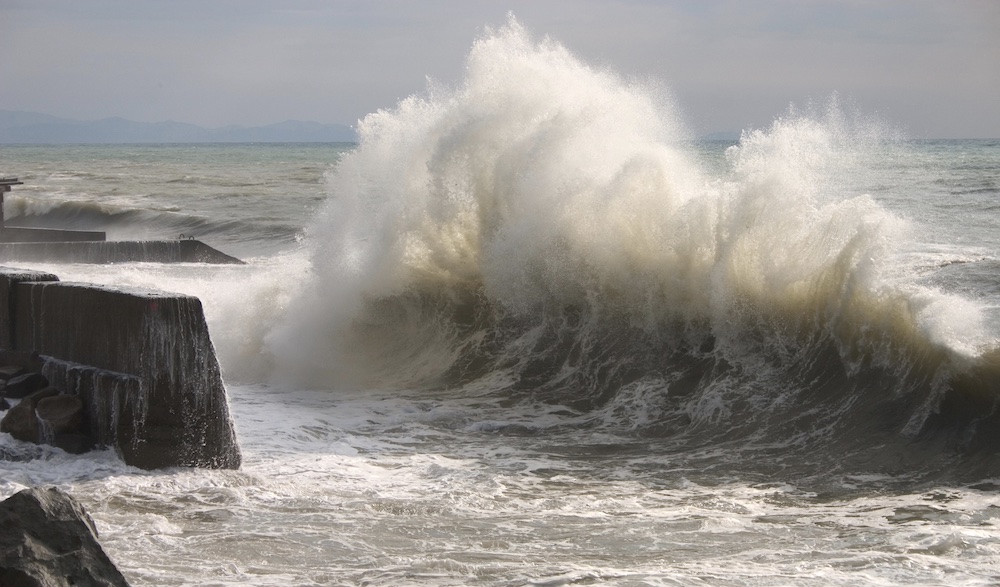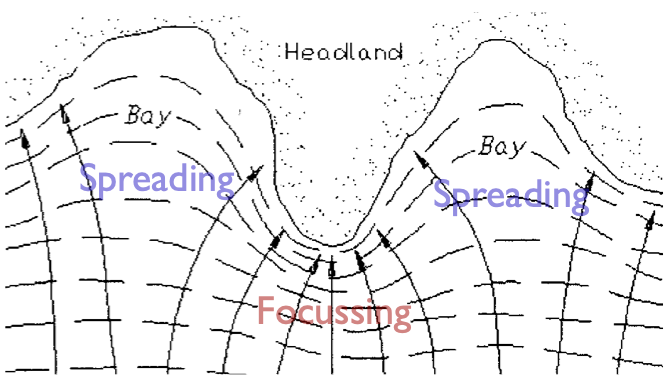1.2 Effects of weather on the sea
1.2.1 Wind against tide
When wind, or waves are going the opposite direction to a tidal stream, they become shorter, taller and often break. This can make for challenging (scary / fun) conditions off headlands and in tide races.

1.2.2 Offshore winds
If the wind is strong, it often makes sense to seek coastlines that are sheltered from the wind. However, the wind on these coastlines will blow offshore, creating a potential hazard. What seems like a light wind close to land and cliffs may be a strong wind further out. If the group gets blown away from land, getting back to shore may be difficult.
1.2.3 Cross seas / Confused seas
If two sets of waves are coming from different directions across the same stretch of water, the resulting interference pattern can create a confused sea with seemingly random large ‘haystack’ shaped waves. This can occur if the wind direction changes through a large angle, superimposing a wind driven chop on an existing swell. The image below shows a confused sea created by changing wind direction in a cyclonic weather system.

1.2.4 Reflected waves, clapotis
Waves hitting vertical cliffs will reflect back and interfere with the incident waves. This creates a pattern of larger and sharper waves that can be challenging to paddle in. When the waves don’t hit the cliff square on, the interference pattern will be more complex, creating a confused sea.

1.2.5 Wave diffraction and focusing
Waves tend to diffract (bend) around obstructions and as they enter shallow water. One result of this is that a headland will provide shelter from waves coming from the far side, but waves will bend around the headland to hit the shoreline behind it to some degree.
As waves enter bays, diffraction causes them to spread. As a result, waves within bays are typically smaller than those on straight coastlines or the open sea. By contrast, waves tend to focus onto headlands, creating larger waves at exposed points.

Diffraction of waves around both sides of an island can form a confused cross-sea behind the island.
1.2.6 Boomers
Waves break when they enter shallow water. Normally, it’s obvious where this will happen - on a beach or against cliffs. Sometimes, waves will break on an underwater reef. This is especially problematic if the depth of the reef is such that only the largest waves will break over it. A paddler might paddle over the reef, not having seen any problems, only to have the biggest wave of the day break over them.